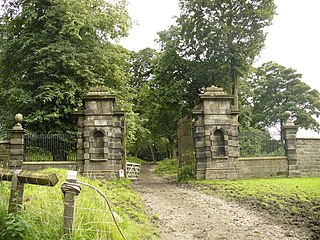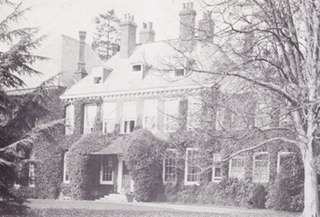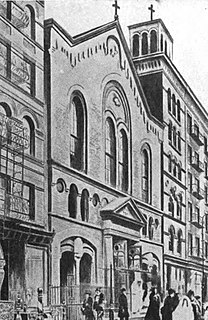 W
W7 Eccles Street was a row house in Dublin, Ireland. It was the home of Leopold Bloom, protagonist of the novel Ulysses (1922) by James Joyce. The house was demolished in 1967, and the site is now occupied by the Mater Private Hospital.
 W
WThe Alhambra-Maurice Chevalier was a music hall located at 50, rue de Malte in the 11th arrondissement of Paris. It opened on August 11, 1866, and after a long history, and many name changes, was finally demolished in 1967. When the theatre originally opened, it was actually called the Cirque-Impérial—it was only in 1956 that Jane Breteau renamed it Alhambra-Maurice Chevalier, in honor of the beloved French actor and singer.
 W
WBerkhamsted Place was an English country house which was erected sometime around 1580 in Berkhamsted, Hertfordshire, England. It was built by Sir Edward Carey, the keeper of the Jewels to Queen Elizabeth I from stones removed from Berkhamsted Castle. Several notable residents of Berkhamsted lived in the house and over the years its owners welcomed guests such as King Charles I and William Gladstone.
 W
WDeepdene was an estate and country house occupying land to the southeast of Dorking, Surrey, England. The remains of the gardens are Grade II* listed with the adjoining Chart Park on the Register of Historic Parks and Gardens.
 W
WThe Edificio Gonzalo Mejía was an art nouveau hotel, theatre, and commercial building in Medellín, Colombia standing from 1924 to 1967. Designed by the Belgian architect Agustín Goovaerts in 1922, the building contained the Hotel Europa and a theatre dedicated to showing movies along with other commercial clients. The building has been considered as one of the finest works of architecture built in Colombia during the 1920s. In 1967, the building was demolished and replaced by the Coltejer Building, the tallest in Medellín.
 W
WEmmott Hall was a country house in the village of Laneshawbridge, Colne, Lancashire, England.
 W
WHaydon Hall was one of the three main houses of Eastcote, within what is now the London Borough of Hillingdon. The house was built in 1630 as a home for Lady Alice, Dowager Countess of Derby who had been living in Harefield. The house remained in the ownership of Lady Alice's descendants for several years, on the side of her eldest daughter. For a time the house was renamed "Eastcote Park" though was returned to the original name.
 W
WThe Jerome Mansion was a mansion located on the corner of East 26th Street and Madison Avenue, across from Madison Square Park in the modern neighborhood of NoMad in Manhattan, New York City. It was the home of financier Leonard Jerome, one of the city's richest and most influential men in the middle- to late-19th century. It was built from 1859 to 1865, and demolished in 1967.
 W
WThe Mandelbaum Gate is a former checkpoint between the Israeli and Jordanian sectors of Jerusalem, just north of the western edge of the Old City along the Green Line. The first checkpoint for the Hashemite Kingdom of Jordan/Israel Mixed Armistice Commission at the Mandelbaum Gate, from the close of the 1948 Arab–Israeli War in 1949 until August 1952, was moved from the Israeli side of the Gate to the Demilitarised Zone after the "Barrel Incident". The second checkpoint existed until the 1967 Six-Day War. The Gate became a symbol of the divided status of the city.
 W
WThe Metropolitan Opera House was an opera house located at 1411 Broadway in Manhattan, New York City. Opened in 1883 and demolished in 1967, it was the first home of the Metropolitan Opera Company.
 W
WNine Elms locomotive works were built in 1839 by the London and South Western Railway (LSWR) adjoining their passenger terminus near the Vauxhall end of Nine Elms Lane, in the district of Nine Elms in the London Borough of Battersea. They were rebuilt in 1841 and remained the principal locomotive carriage and wagon workshops of the railway until closure in stages between 1891 and 1909. Thereafter a large steam motive power depot remained open on the site until 1967, serving Waterloo railway station.
 W
WThe Palacio de Ripalda was a building of Eclectic style designed in 1889 by Spanish architect Joaquín María Arnau Miramón in the Spanish city of Valencia.
 W
WThe Pargo Kaling was a large chorten straddling across the road leading from Drepung between the Potala's Red Hill (Marpori) and the Iron Hill (Chagpori) at Lhasa, Tibet, and containing a through-passage or archway for people and animals. It formed the "Western Gate" of the city and led into the village of Shol. It was destroyed in 1967, but the Lhasa authorities had it rebuilt in 1995.
 W
WThe Port Tewfik Memorial was originally situated at Port Tewfik, now called Suez Port, on the Suez Canal. It was unveiled in May 1926 for the Imperial War Graves Commission and commemorated 4,000 officers and men of the Indian Army killed during the Sinai and Palestine Campaign during the First World War. The original memorial was designed by Scottish architects John James Burnet and Thomas S. Tait, and included sculptures by British sculptor Charles Sargeant Jagger.
 W
WThe Church of St. Joachim was a Roman Catholic parish church under the authority of the Roman Catholic Archdiocese of New York, located at 26 Roosevelt Street, in Manhattan, New York City.
 W
WTrent Mill was a cotton spinning mill on Duchess Street in Shaw and Crompton, Greater Manchester, England. It was built by F.W. Dixon & Son in 1908. It closed and was taken over by the Lancashire Cotton Corporation in 1929 reopened in 1938 and closed again in 1962, and was demolished in 1967.
 W
WWillingham House was a country house in North Willingham, Lincolnshire, England.